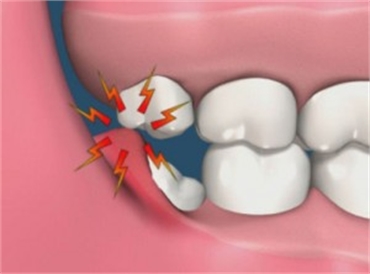The Surgery and Outcome of Wisdom Teeth Removal

Wisdom teeth are the third molars and they are the last permanent teeth to appear or erupt in the mouth. Likewise, they usually appear between the ages 17 and 25.
There are some people who never get to develop their wisdom teeth. However, for others their wisdom teeth normally erupt in the mouth or they grow normally. In case they erupt partially, they are called to be impacted. When this happens, surgery may be required. This procedure is performed in dental clinic. But, in case the tooth is deeply impacted or if extraction is too difficult, an oral surgeon will be recommended.
During the Procedure
A doctor or an oral surgeon may use some types of anesthesia. The kind of anesthesia to be used would basically depend on the anticipated complexity of the extraction and the patient’s comfort level. The options would include the following.
Local Anesthesia- The doctor or surgeon would administer the local anesthesia using one or more injections near the extraction site. Before the patient receives an injection, the dentist or surgeon would apply a substance to the gums that will numb the area. The patient is awake during the procedure. Although there would be some movement and pressure, pain is not likely to be experienced.
Sedation Anesthesia- The surgeon or dentist would give a sedation anesthesia through the intravenous line in the arm. This kind of anesthesia suppresses the consciousness of the patient during the procedure and no pain is felt.
General Anesthesia- In case of special conditions, the patient may be offered with general anesthesia. The medication is inhaled through the nose and this type of anesthesia makes the patient lose his consciousness and not feel any pain during the entire procedure. A surgical teal will also closely monitor the breathing, medication, fluid and blood pressure, as well as the temperature of the patient.
After the Procedure
If the patient received a general or sedation anesthesia, he will be taken to a recovery room right after the procedure. If it’s only a local anesthesia, the recovery time will just be in a dental chair. As the patient heals from the surgery, the following instructions should be followed.
After the surgery, the patient needs to rest. Normal activities shall be resumed the day after. However, for a minimum of one week, the patient should avoid strenuous activities, which may result in dislodging the blood clot.
Plenty of water should be drunk after the surgery. Caffeinated, alcoholic, hot, and carbonated beverages should all be avoided within the next 24 hours. Also, when drinking, it should be with a straw for a week since the sucking suction could dislodge the blood clot from its socket.
Only soft foods should be eaten like yogurt for the first 24 hours after the extraction surgery. Hot or spicy, chewy, and hard food need to be avoided as they could get stuck in the socket and trigger irritation.
When cleaning the mouth, do not brush the teeth yet, just rinse with a mouthwash. The patient can also use warm salt water and this should be done every two hours and right after meals for one week after the surgery.
Result
When there are no stitches that need to be removed, complications, or any persistent problem like pain or swelling, the patient may need not have a follow-up appointment with a dentist in placentia california after the wisdom teeth removal and resume his normal life.

